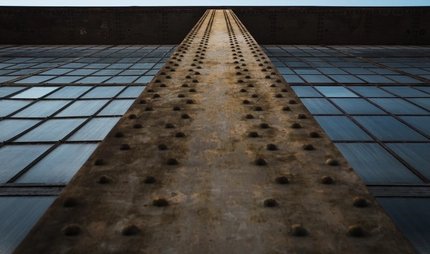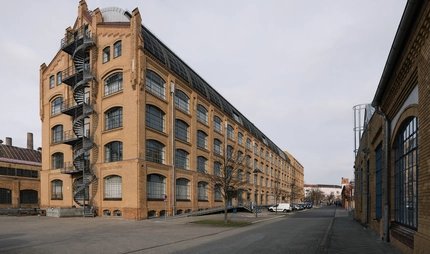
Westhafen ( West Harbour / Behala)
Berlin's Largest Port Facility Over the Years
The Westhafen ("Western Harbour") covers 430,000 m2 behind the freight yard between Beusselstraße and Westhafenstraße. This huge inland port is connected by the Berlin-Spandauer Schifffahrtskanal and the Westhafenkanal to the Oder and Elbe rivers.
The administration and storage buildings at the three docks are visible from far away. The administration building with its slim central tower dominates the port facility. The slender tower, tapering as it moves upward, has a viewing gallery, lantern and pyramid roof reminiscent of a town hall tower or lighthouse and is the landmark of the Westhafen for incoming ships. The monumental size of the port and the sophisticated technical concept of the port facilities testify to its importance for Berlin industry in the twentieth century. Having started operations in 1923, the Westhafen was an important location for the emerging industrial city of Berlin.
History of the Westhafen
Initial planning for the construction of a large port in Berlin started at the turn of the last century. Construction of the Westhafen began in 1914, but was delayed during the First World War. Responsible for the overall plan was the city's architect for civil engineering at the time, Friedrich Krause. The layout of the facilities and the façade design were based on designs by architects Wolffenstein and Lorenz. The docks and buildings are arranged according to a regular plan. The administration building, the casino, three warehouses and the granary are grouped around the central dock, while the customs house occupied the western edge of the port facility. All of the façades were uniformly faced with purplish-brown bricks with iron oxide content. The monumental appearance of the buildings is enhanced by the massive stone piers that protect the shore from waves.
A Waterfront in Transition
BEHALA (Berliner Hafen- und Lagerhaus AG) was founded in 1923 to operate the Westhafen. The port began operations that same year. The listed port facility continues to be used for shipping to this day. Parts of the warehouses are, however, no longer needed for port operations. As a result, the granary has now been converted to house the newspaper division of the Staatsbibliothek Preußischer Kulturbesitz (the Prussian state library collections). In 2001, the northern docks were filled in.


